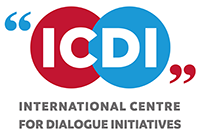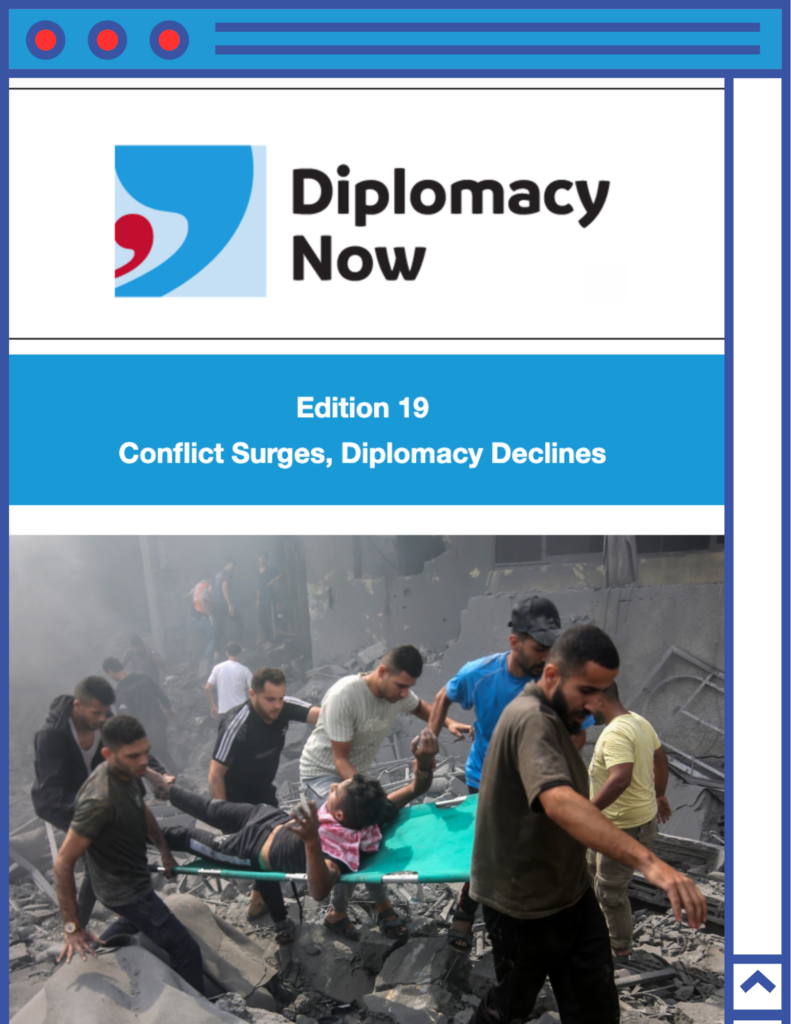Yemen has a long history of defending the Palestinian cause, starting with its objection to United Nations Resolution 181 that endorsed the partition of Palestine in 1947. Yemen’s then ruler complained to the UN General Assembly and the leaders of Britain and the United States about this “iniquitous resolution” that in his view violated the rights of its inhabitants. During the Israeli invasion of Lebanon in 1982, Yemenis fought alongside the fedayeen. The Houthi movement, in full swing by the time of Iraq’s invasion in 2003, is rooted in the second intifada, occasioned by the killing of 12-year-old Muhammad al-Durrah in Gaza in September 2000.
In the wake of the region-wide uprisings in 2011 which saw the veteran Yemeni President ‘Ali ‘Abdullah Salih replaced with his deputy ‘Abdrabbuh Mansur Hadi, the Houthis (officially called Ansar Allah, ‘Partisans of God’) assumed control of the capital San‘a in 2014. In March 2015, a coalition led by Saudi Arabia intervened to reinstate Hadi’s government after he had fled to Aden. After seven years of an intense bombing campaign, a ceasefire, mediated by Oman, was negotiated during several meetings between Saudi Arabia and the Houthis in 2022. It was agreed that both parties would end all offensive military air, ground and maritime operations inside Yemen and across its borders; fuel ships would enter into Hudaydah seaport and commercial flights would operate in and out of San‘a airport to predetermined destinations. Saudi Arabia would pay salaries to all government employees. The agreement – which is yet to be ratified ‒ laid the foundation of a UN-sponsored road map focused on issues such as the unification of the country’s central banks and currency, the resumption of oil exports and the opening of roads in the southern city of Ta‘izz which has been besieged by the Houthis for several years. The road map’s chief objective is to address urgent economic and humanitarian measures and to reach a peaceful settlement involving all parties to the conflict under UN auspices. There has been an informal truce for nearly two years between the Houthis and the Presidential Leadership Council (PLC), an eight-member body (replacing Hadi) established by Saudi Arabia on April 7, 2022.
Houthis use position on Palestine to seek regional legitimacy
Since November 2023 the Houthis have mounted attacks on shipping linked to Israel, Britain and the US in the Red Sea and surrounding waters (99 by mid-March 2024), claiming that these would not be halted until the humanitarian needs in Gaza were addressed. (Other ships such as the Rubymar, registered in the Marshall Islands, were hit ostensibly due to ownership ambiguities). The attacks, declared as a jihad by the Houthi leader, have served to mark regional fault lines more poignantly and solidified the Houthis’ position in the so called “Axis of Resistance.” In parts of the Middle East their campaign has gained them kudos for being the only Arab leadership that has acted against Israel’s retaliatory assault of Gaza, and for standing up against the US and Britain for providing arms and diplomatic cover to Israel. While the struggle for power in Yemen is ongoing, the Houthis seek to legitimize themselves domestically and regionally by defending the rights of those widely regarded as having been wronged. Many southern Yemenis who have been hostile to them since their invasion of Aden in 2015 now feel a sense of national pride.
On January 11, 2024, President Biden, who at the beginning of his tenure set out to end the Yemen war, has in tandem with Britain begun a string of air and missile strikes against largely military targets in areas governed by the Houthis. A fortnight thereafter US/UK forces struck civilian objects such as Hudaydah airport and the adjacent Ras Isa oil terminal ‒ a fact that highlights the economic dimension of the campaign. The Houthis’ fractious relationship with the US goes back to the early 2000s, when the US urged Salih to nip their anti-American protest movement in the bud. Seeking to establish his credentials in the ‘war on terror,’ Salih obliged by assaulting the Houthis’ northern home province which had long been marginalized and neglected. The US was an accomplice to Saudi Arabia’s latest war in Yemen, providing it with what it provides for Ukraine: intelligence, arms, and training. The current punitive campaign might also be a mechanism for weakening the Houthis ahead of nation-wide peace negotiations. It demonstrates that the US has not abandoned its interventionist policies in the Middle East and not pursued a policy of retrenchment, by for example shifting responsibility for maintaining security in the region to its allies (as it did in 2015).
Saudi Arabia, whose “Operation Decisive Storm” in Yemen did not yield any result other than strengthening the Houthis’ grip on power, is seeking a face-saving departure from Yemen. It has declared that it remains committed to ratifying a peace deal with the Houthis and declined to involve itself militarily once again. Focusing on the implementation of Vision 2030 and mindful of the strong pro-Palestinian sentiments among its population and the wider Arab world, the Saudi leadership stated that both the threat to international shipping in the Red Sea and the carnage in Gaza should end (the Houthis were not referred to by name). Neither Saudi Arabia nor the UAE have allowed the US to fly sorties from their territories lest they be exposed to further Houthi reprisals (even the French naval base in Abu Dhabi is off limits.) However, the US has deployed missile defense systems on the Yemeni island of Socotra, a
UNESCO world heritage site, thus adding to its militarization.
The US dilemma in the Red Sea
Having thus far been unsuccessful in stopping the Houthis’ attacks on maritime shipping, the US finds itself in a dilemma. Indirect talks with Iran aimed at persuading it to use its good offices to talk the Houthis into halting their attacks came to naught. If the US were to hit targets deep inside Yemen and/or engage its Special Forces, Houthi forces (who claim to be in possession of hypersonic missiles) could retaliate by either focusing more strongly on hitting US ships or resuming attacks on neighboring countries that are still occupying parts of Yemen. Such an exacerbation and an increase in civilian deaths due to US / UK military operations would serve to mobilize an enraged population and nurture the Houthis’ victimhood narrative, and possibly provoke them to use their sea drones which Ukraine has recently used successfully to strike Russian ships. The US could substantially weaken the Houthis, who are said to have 800,000 men under arms, only if they were to commit ground forces in Yemen. An intensification of the conflict would lead to further regional destabilization. Furthermore, it might reignite armed conflict between the various Yemeni factions ‒ not to mention a potential reemergence of ISIS and AQAP which are dormant in parts of the south and might take advantage of the turmoil.
The Houthis’ foes are hoping that the air strikes will sufficiently weaken them. The PLC has long had misgivings about the roadmap because they have been excluded from negotiations between the Houthis and Saudi Arabia. Now that events in Yemen have taken another dramatic turn and air strikes have resumed, an inclusive political settlement between the rival parties is far off. However, the US intervention may not inevitably derail it. Yemenis fear that fighting between opposed Yemeni factions ‒ who currently feel they ought to be united against their common Zionist enemy ‒ may break out after a truce has been agreed in Gaza. Some members of the PLC would like to take the fight to the enemy again but cannot do so unless Saudi Arabia and the UAE were prepared to arm them. Supporters of the UN-recognized government such as the US, Britain and France are unlikely to do so without Saudi/UAE approval and for fear of ‘escalation’, the US’s catchword. At a minimum, they would have to provide air cover for the forces opposed to the Houthis. In March 2024, there has been sabre rattling from Aidarous al-Zoubaidi, the leader of the secessionist Southern Transitional Council (STC) and vice president of the PLC. He put several gunboats and other craft into service, arguing that in view of ongoing activities in the territorial waters by the Houthis, the naval forces should carry out their tasks.
Foreign intervention could have catastrophic consequences for Yemenis
Sustained foreign intervention and the resumption of hostilities in several Yemeni provinces would prolong the war for years to come, have catastrophic consequences for the exhausted population and jeopardize any pace deal for the time being. As for the prospect of a power sharing agreement, willingness to make the compromises needed to negotiate an end to hostilities will depend on the trajectory of the US/UK intervention, the duration and outcome of the war in Gaza, and skilful mediation. The PLC does not represent a unified bloc and lacks a comprehensive strategy of how to position itself in future UN-facilitated peace talks. If the Houthis emerge from the Tomahawk cruise missile blows relatively unscathed, they are less likely to enter an agreement with the PLC on equal terms and instead would claim leadership positions and key ministerial portfolios. They might feel emboldened and consider further incursions into the eastern and southern provinces of Ma’rib and Shabwa to gain access to vital resources. (None of the country’s oil and gas resources are currently located in Houthi-controlled areas. In November 2022, the Houthis used drones to attack an oil export platform in the southern port city of Shihr to prevent the PLC from selling oil until the salaries of all state employees were paid from oil revenues.)
However, if the US-led military intervention succeeds in debilitating the Houthis’ military capability to a significant degree, they may be disinclined to accept a humiliating minority partnership in a future national unity government. It is far from clear whether most of those taking part in the negotiations still desire such a government (it is rejected by groups such as the STC). Many southerners who represent resource-rich and large provinces such as the Hadramawt have their own strategic interests and are opposed to being ruled by either San‘a or Aden (the official residence of Rashad al-Alimi, chairman of the PLC, and Prime Minister Ahmad ‘Awad bin Mubarak). One of the main obstacles to a negotiated peace deal is the renewed categorization of the Houthis as a Designated Global Terrorist group on 17 January 2024. The payment of civil servant salaries through banks ‒ a key Houthi demand ‒ would be blocked, and the unhindered use of Houthi-controlled seaports and airports foreclosed.
In the past decades, US military interventions in the Middle East have served to exacerbate existing conflicts and provided fertile ground for the rise of new militant groups. It is unlikely that by the end of his term in office in November, Biden will have ended the “forever wars” unleashed by the US after 9/11.
Gabriele vom Bruck has conducted extensive field research in Yemen and has published on elites, religious movements, gender, consumption, photography and memory and history. She taught Social Anthropology with reference to the Middle East at the London School of Economics, the University of Edinburgh and the School of Oriental & African Studies, University of London. She is the author of Islam, Memory and Morality in Yemen: Ruling Families in Transition and Mirrored Loss: A Yemeni Woman’s Life Story.




